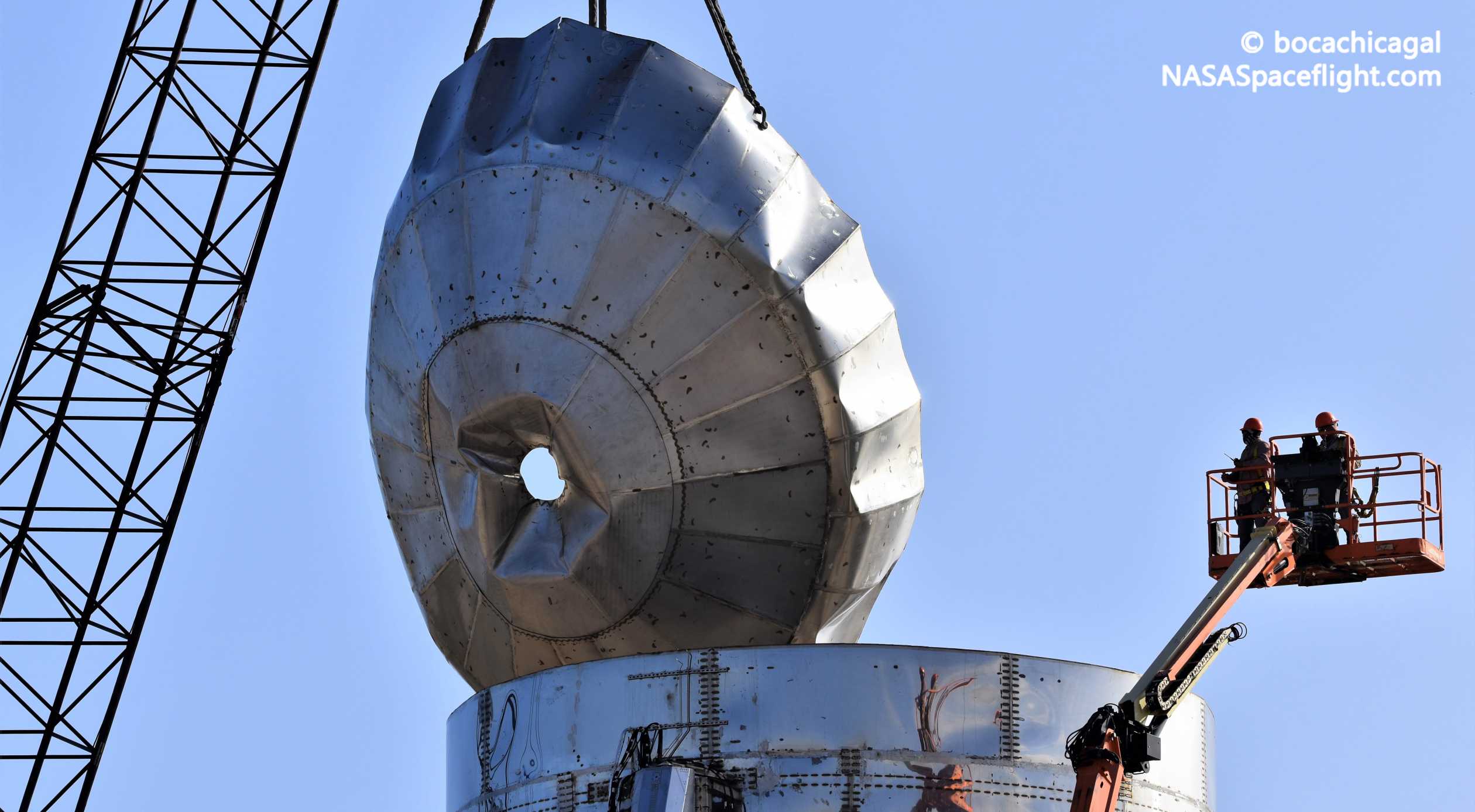
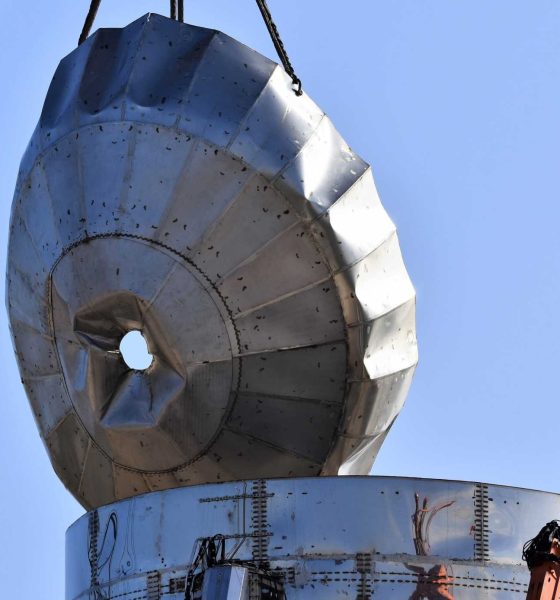
News
SpaceX scraps first Starship prototype to make way for new and improved rockets
A bit less than a month after SpaceX’s first full-scale Starship prototype was partially destroyed during testing, the damaged rocket has been almost completely scrapped to make way for new and improved Starships.
On November 20th, SpaceX effectively tested the Starship Mk1 – the first full-scale prototype – to destruction, pressurizing the rocket’s tank section (lower half) until it quite literally popped its top. The pressure wave that failure created damaged almost every internal component of the massive vehicle, all but guaranteeing that SpaceX would have to scrap the vehicle and move on to new prototypes.
Those future prototypes will take advantage of the many, many lessons learned from Starhopper’s two test flights and several additional grounded tests, as well as the many learning experiences presented through Starship Mk1’s pathfinder manufacturing, assembly, and test campaign. As is SpaceX’s signature, the company is choosing to learn by building actual hardware and making the inevitable mistakes that come hand in hand with such an eccentric and ambitious program.
Above all else, SpaceX is trying to redefine the minimum infrastructure needed to build high-performance launch vehicles at a scale comparable to or even larger than NASA’s Saturn V, the largest rocket ever successfully launched. Modern rockets like Falcon 9 and Atlas V are built in relatively clean and environmentally-controlled environments and Saturn I and V – while quite a bit less sterile – were at least built inside large hangar-like facilities.
With Starship, SpaceX instead wants to build rockets even larger than Saturn V out in the elements and with a far more common (and thus affordable) workforce, (theoretically) made possible in large part thanks to its extensive use of stainless steel. Case in point, Starhopper – a low-fidelity Starship test bed – was quite literally welded together on the South Texas coast by welders far more familiar with building water towers. While not without its teething pains, Starhopper proved to be incredibly sturdy and resistant to anomalous behavior and successfully performed two separate flight tests in July and August 2019.
Three months after Starhopper’s second and final hop test, SpaceX’s Starship Mk1 tank section – the lower half of the rocket – was moved to the launch site and began a series of tanking tests. The first few tests were completed successfully and focused on searching for leaks with a neutral cryogenic liquid (likely liquid nitrogen). After the majority of those leaks were sealed, SpaceX moved into liquid oxygen load testing a few days later. For unconfirmed reasons, it turned out that that first liquid oxygen pressure test would also be Starship Mk1’s last.
On November 20th, SpaceX pressurized Starship Mk1 to its limits, with almost all of the visible creases and wrinkles in its steel surface visibly smoothing out as the supercool liquid oxygen caused frost to form on the exterior. Ultimately, SpaceX pushed the vehicle beyond its limits and its uppermost tank dome quite literally popped off of Starship’s tank section, whether the overpressure event was intentional or unexpected. The force of that overpressure event essentially sent a shockwave through Starship, crushing and warping its two remaining tank domes and transfer tubes like an aluminum soda can.
In simpler terms, very few parts of Starship Mk1 escaped unharmed, all but guaranteeing that it would not be worth the effort to repair it. Instead, SpaceX has almost entirely scrapped the prototype over a period of two weeks. According to an official statement released shortly after Mk1’s failure, SpaceX will attempt to recover and reuse as much of Mk1 as it can and those few salvageable parts will be added to an entirely new prototype, deemed Starship Mk3.
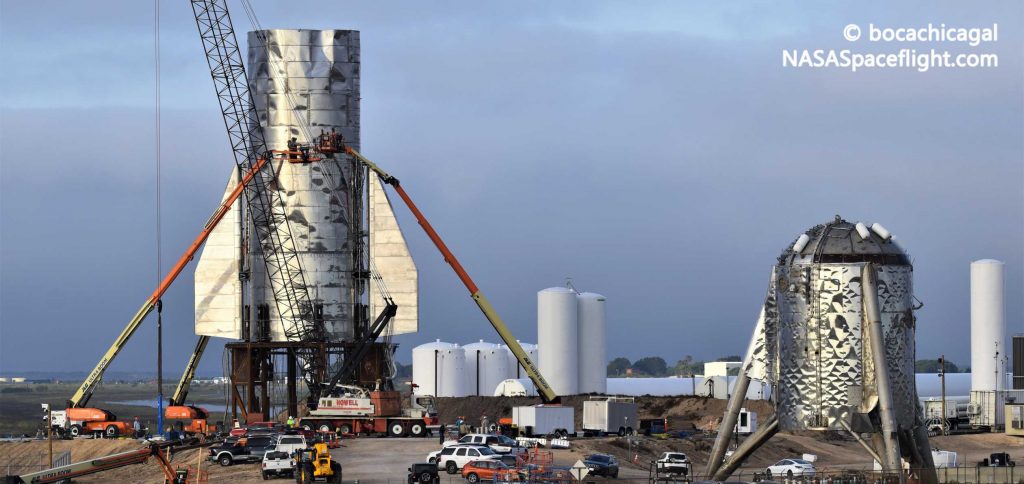
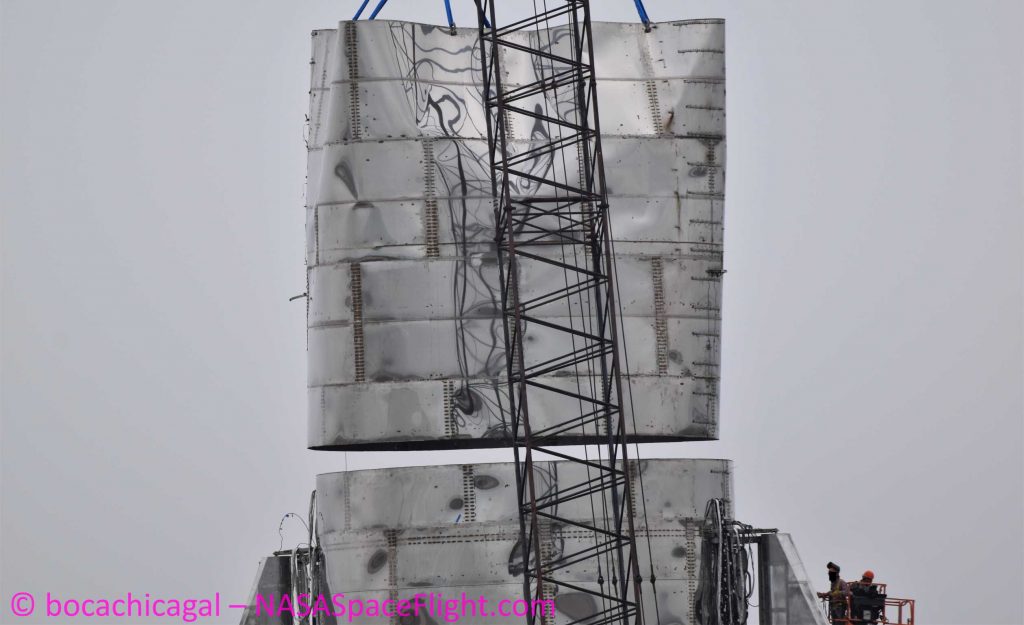
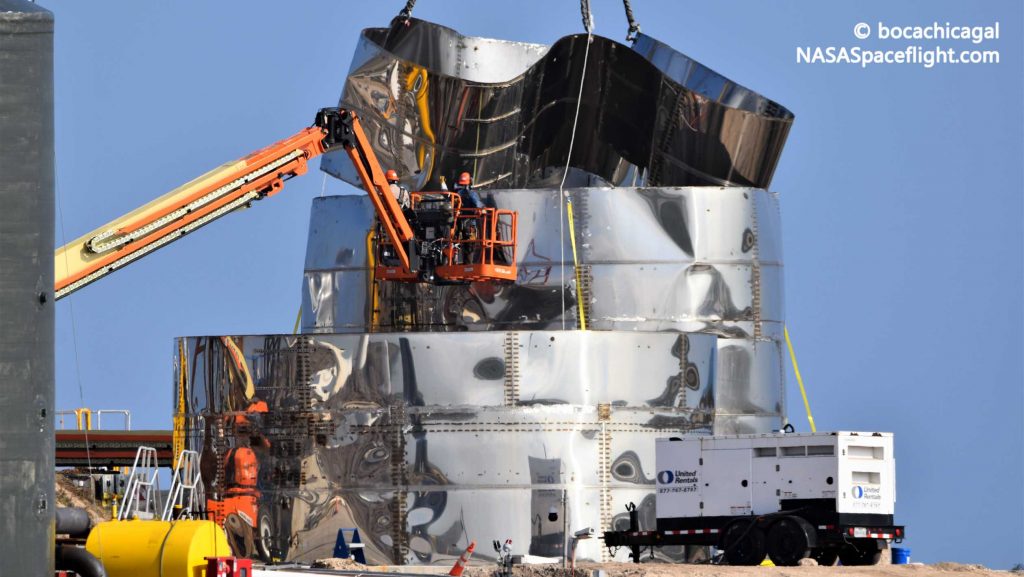

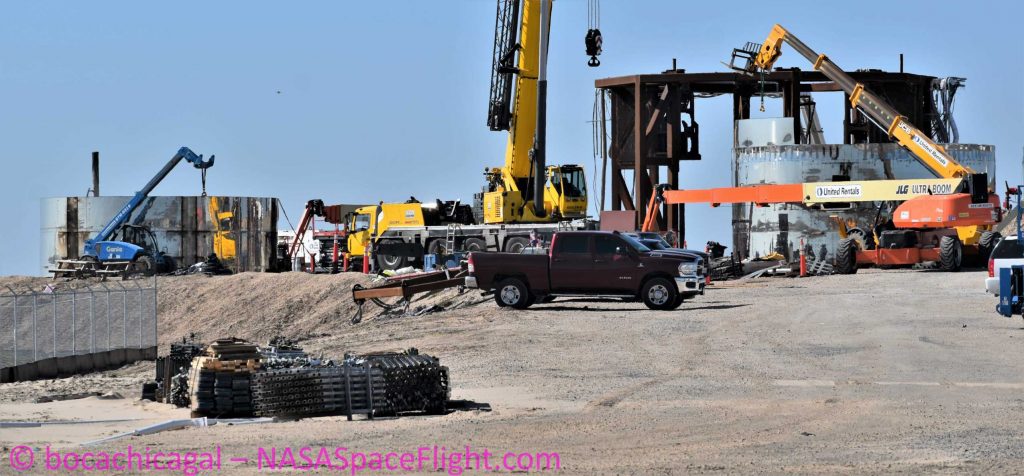
Although it’s disappointing that Starship Mk1 was unable to perform any kind of Raptor engine testing, let alone flight tests, it’s safe to say that the pathfinder prototype has been well worth the time and effort it took to build. Regardless of flight or engine testing, a ton of Mk1’s value lies in its utility as a hands-on, physical testbed for SpaceX employees to perform experiments and learn how to build steel rockets – and build them outside in less than friendly weather conditions.
SpaceX is in the midst of rapidly expanding its presence in Boca Chica, Texas, including a new launch control center, an expanded landing and launch pad, new production facilities, and more. The company has also just begun churning out numerous monolithic (single-weld) steel rings that will likely become part of Starship Mk3 in the near future. It will likely be several months before that next-generation prototype is as close to completion as Starship Mk1 was, but it should be well worth the wait and well worth its predecessor’s sacrifice.
Check out Teslarati’s Marketplace! We offer Tesla accessories, including for the Tesla Cybertruck and Tesla Model 3.

Elon Musk
Elon Musk’s X will start using a Tesla-like software update strategy
The initiative seems designed to accelerate updates to the social media platform, while maintaining maximum transparency.

Elon Musk’s social media platform X will adopt a Tesla-esque approach to software updates for its algorithm.
The initiative seems designed to accelerate updates to the social media platform, while maintaining maximum transparency.
X’s updates to its updates
As per Musk in a post on X, the social media company will be making a new algorithm to determine what organic and advertising posts are recommended to users. These updates would then be repeated every four weeks.
“We will make the new 𝕏 algorithm, including all code used to determine what organic and advertising posts are recommended to users, open source in 7 days. This will be repeated every 4 weeks, with comprehensive developer notes, to help you understand what changed,” Musk wrote in his post.
The initiative somewhat mirrors Tesla’s over-the-air update model, where vehicle software is regularly refined and pushed to users with detailed release notes. This should allow users to better understand the details of X’s every update and foster a healthy feedback loop for the social media platform.
xAI and X
X, formerly Twitter, has been acquired by Elon Musk’s artificial intelligence startup, xAI last year. Since then, xAI has seen a rapid rise in valuation. Following the company’s the company’s upsized $20 billion Series E funding round, estimates now suggest that xAI is worth tens about $230 to $235 billion. That’s several times larger than Tesla when Elon Musk received his controversial 2018 CEO Performance Award.
As per xAI, the Series E funding round attracted a diverse group of investors, including Valor Equity Partners, Stepstone Group, Fidelity Management & Research Company, Qatar Investment Authority, MGX, and Baron Capital Group, among others. Strategic partners NVIDIA and Cisco Investments also continued support for building the world’s largest GPU clusters.
News
Tesla FSD Supervised wins MotorTrend’s Best Driver Assistance Award
The decision marks a notable reversal for the publication from prior years, with judges citing major real-world improvements that pushed Tesla’s latest FSD software ahead of every competing ADAS system.

Tesla’s Full Self-Driving (Supervised) system has been named the best driver-assistance technology on the market, earning top honors at the 2026 MotorTrend Best Tech Awards.
The decision marks a notable reversal for the publication from prior years, with judges citing major real-world improvements that pushed Tesla’s latest FSD software ahead of every competing ADAS system. And it wasn’t even close.
MotorTrend reverses course
MotorTrend awarded Tesla FSD (Supervised) its 2026 Best Tech Driver Assistance title after extensive testing of the latest v14 software. The publication acknowledged that it had previously criticized earlier versions of FSD for erratic behavior and near-miss incidents, ultimately favoring rivals such as GM’s Super Cruise in earlier evaluations.
According to MotorTrend, the newest iteration of FSD resolved many of those shortcomings. Testers said v14 showed far smoother behavior in complex urban scenarios, including unprotected left turns, traffic circles, emergency vehicles, and dense city streets. While the system still requires constant driver supervision, judges concluded that no other advanced driver-assistance system currently matches its breadth of capability.
Unlike rival systems that rely on combinations of cameras, radar, lidar, and mapped highways, Tesla’s FSD operates using a camera-only approach and is capable of driving on city streets, rural roads, and freeways. MotorTrend stated that pure utility, the ability to handle nearly all road types, ultimately separated FSD from competitors like Ford BlueCruise, GM Super Cruise, and BMW’s Highway Assistant.
High cost and high capability
MotorTrend also addressed FSD’s pricing, which remains significantly higher than rival systems. Tesla currently charges $8,000 for a one-time purchase or $99 per month for a subscription, compared with far lower upfront and subscription costs from other automakers. The publication noted that the premium is justified given FSD’s unmatched scope and continuous software evolution.
Safety remained a central focus of the evaluation. While testers reported collision-free operation over thousands of miles, they noted ongoing concerns around FSD’s configurable driving modes, including options that allow aggressive driving and speeds beyond posted limits. MotorTrend emphasized that, like all Level 2 systems, FSD still depends on a fully attentive human driver at all times.
Despite those caveats, the publication concluded that Tesla’s rapid software progress fundamentally reshaped the competitive landscape. For drivers seeking the most capable hands-on driver-assistance system available today, MotorTrend concluded Tesla FSD (Supervised) now stands alone at the top.
News
Elon Musk’s Grokipedia surges to 5.6M articles, almost 79% of English Wikipedia
The explosive growth marks a major milestone for the AI-powered online encyclopedia, which was launched by Elon Musk’s xAI just months ago.

Elon Musk’s Grokipedia has grown to an impressive 5,615,201 articles as of today, closing in on 79% of the English Wikipedia’s current total of 7,119,376 articles.
The explosive growth marks a major milestone for the AI-powered online encyclopedia, which was launched by Elon Musk’s xAI just months ago. Needless to say, it would only be a matter of time before Grokipedia exceeds English Wikipedia in sheer volume.
Grokipedia’s rapid growth
xAI’s vision for Grokipedia emphasizes neutrality, while Grok’s reasoning capabilities allow for fast drafting and fact-checking. When Elon Musk announced the initiative in late September 2025, he noted that Grokipedia would be an improvement to Wikipedia because it would be designed to avoid bias.
At the time, Musk noted that Grokipedia “is a necessary step towards the xAI goal of understanding the Universe.”
Grokipedia was launched in late October, and while xAI was careful to list it only as Version 0.1 at the time, the online encyclopedia immediately earned praise. Wikipedia co-founder Larry Sanger highlighted the project’s innovative approach, noting how it leverages AI to fill knowledge gaps and enable rapid updates. Netizens also observed how Grokipedia tends to present articles in a more objective manner compared to Wikipedia, which is edited by humans.
Elon Musk’s ambitious plans
With 5,615,201 total articles, Grokipedia has now grown to almost 79% of English Wikipedia’s article base. This is incredibly quick, though Grokipedia remains text-only for now. xAI, for its part, has now updated the online encyclopedia’s iteration to v0.2.
Elon Musk has shared bold ideas for Grokipedia, including sending a record of the entire knowledge base to space as part of xAI’s mission to preserve and expand human understanding. At some point, Musk stated that Grokipedia will be renamed to Encyclopedia Galactica, and it will be sent to the cosmos.
“When Grokipedia is good enough (long way to go), we will change the name to Encyclopedia Galactica. It will be an open source distillation of all knowledge, including audio, images and video. Join xAI to help build the sci-fi version of the Library of Alexandria!” Musk wrote, adding in a later post that “Copies will be etched in stone and sent to the Moon, Mars and beyond. This time, it will not be lost.”








